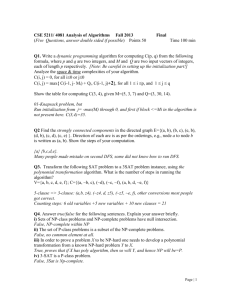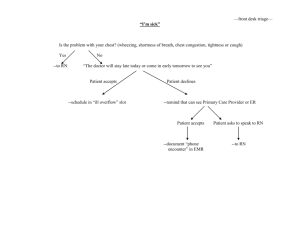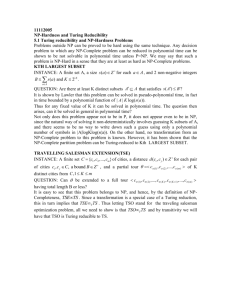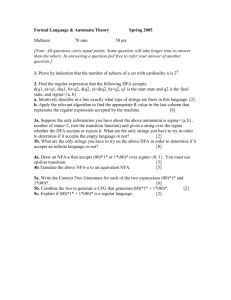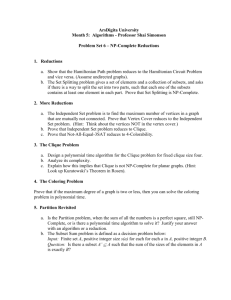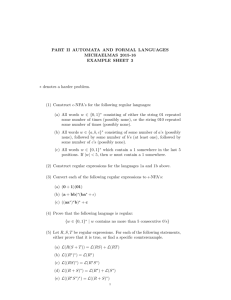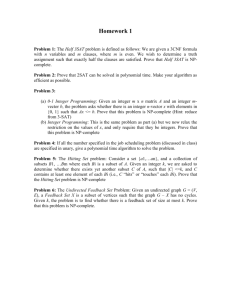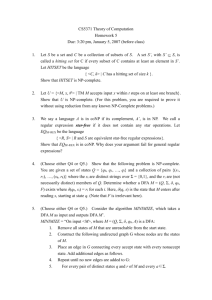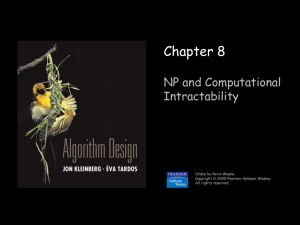Solutions to Homework 7
advertisement
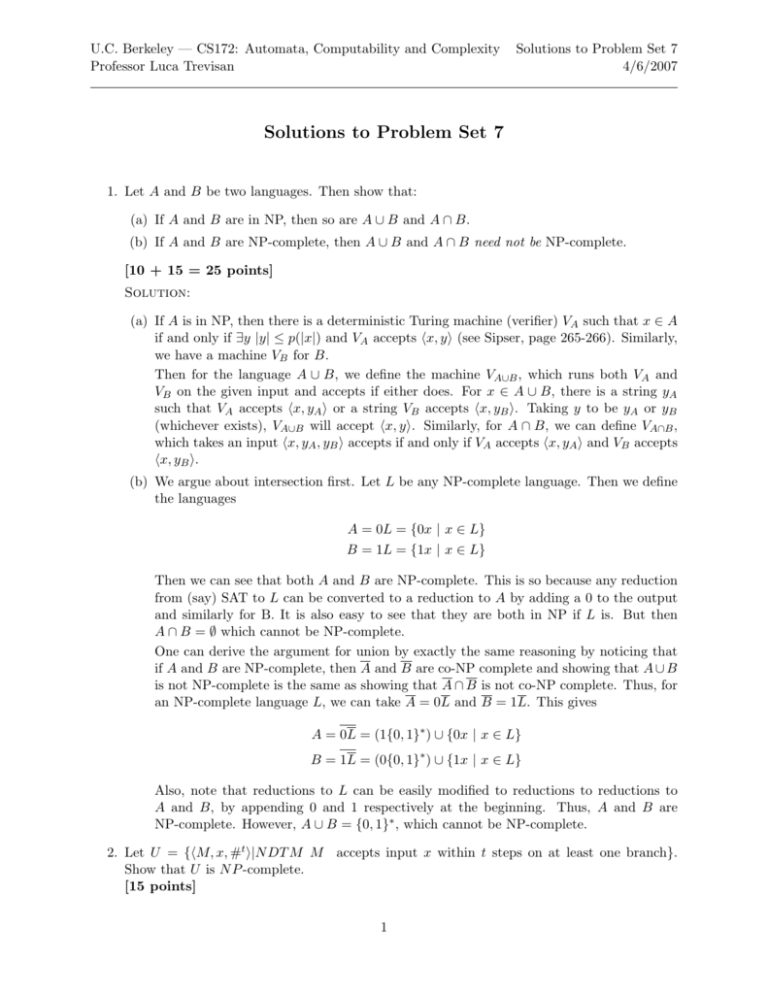
U.C. Berkeley — CS172: Automata, Computability and Complexity
Professor Luca Trevisan
Solutions to Problem Set 7
4/6/2007
Solutions to Problem Set 7
1. Let A and B be two languages. Then show that:
(a) If A and B are in NP, then so are A ∪ B and A ∩ B.
(b) If A and B are NP-complete, then A ∪ B and A ∩ B need not be NP-complete.
[10 + 15 = 25 points]
Solution:
(a) If A is in NP, then there is a deterministic Turing machine (verifier) VA such that x ∈ A
if and only if ∃y |y| ≤ p(|x|) and VA accepts hx, yi (see Sipser, page 265-266). Similarly,
we have a machine VB for B.
Then for the language A ∪ B, we define the machine VA∪B , which runs both VA and
VB on the given input and accepts if either does. For x ∈ A ∪ B, there is a string yA
such that VA accepts hx, yA i or a string VB accepts hx, yB i. Taking y to be yA or yB
(whichever exists), VA∪B will accept hx, yi. Similarly, for A ∩ B, we can define VA∩B ,
which takes an input hx, yA , yB i accepts if and only if VA accepts hx, yA i and VB accepts
hx, yB i.
(b) We argue about intersection first. Let L be any NP-complete language. Then we define
the languages
A = 0L = {0x | x ∈ L}
B = 1L = {1x | x ∈ L}
Then we can see that both A and B are NP-complete. This is so because any reduction
from (say) SAT to L can be converted to a reduction to A by adding a 0 to the output
and similarly for B. It is also easy to see that they are both in NP if L is. But then
A ∩ B = ∅ which cannot be NP-complete.
One can derive the argument for union by exactly the same reasoning by noticing that
if A and B are NP-complete, then A and B are co-NP complete and showing that A ∪ B
is not NP-complete is the same as showing that A ∩ B is not co-NP complete. Thus, for
an NP-complete language L, we can take A = 0L and B = 1L. This gives
A = 0L = (1{0, 1}∗ ) ∪ {0x | x ∈ L}
B = 1L = (0{0, 1}∗ ) ∪ {1x | x ∈ L}
Also, note that reductions to L can be easily modified to reductions to reductions to
A and B, by appending 0 and 1 respectively at the beginning. Thus, A and B are
NP-complete. However, A ∪ B = {0, 1}∗ , which cannot be NP-complete.
2. Let U = {hM, x, #t i|N DT M M accepts input x within t steps on at least one branch}.
Show that U is N P -complete.
[15 points]
1
Solution: Given any NP language L, we have an NDTM ML such that ∀x ∈ L, ML
accepts x on at least one branch in at most pL (|x|) steps, where pL () is a fixed polynomial
depending on the machine. Also, ML does not accept any x ∈
/ L. Then, given x, we create
y = hML , x, #pL (|x|) i in polynomial time. By the previous argument, x ∈ L iff y ∈ U . Thus,
U is NP-hard.
To show that U is also in NP, we can create an NDTM MU , which given an input u =
hM, x, #t i, simulates M on x for t steps. MU nondeterministically guesses all the branches
of M and accepts u iff M accepts u. Since the input has length at least t and we simulate
M for at most t steps, the running time is polynomial in the length of the input (note this
is the reason we need t in unary). It is easy to see that MU accepts exactly the language U ,
thus proving U ∈ N P . Hence, U is NP-complete.
3. For a function g : N → N, we say a language L is in SIZE(g(n)) if there exists a family of
circuits C1 , C2 , . . . (with Ci having i inputs and one output) such that:
• ∀n ∈ N the size of Cn is at most g(n)
• ∀x ∈ {0, 1}n x ∈ L ⇔ Cn (x) = 1.
In the class we saw a proof that SIZE(2o(n) ) ( SIZE(2n ) i.e. for every large enough n
there exists a function f : {0, 1}n → {0, 1} that is not computable by circuits of size 2o(n) .
This problem asks you to show such a “separation result” for a smaller function. Show that
SIZE(n3 /100 log n) ( SIZE(n3 ).
[20 points]
Solution: We saw is class that any circuit of size S can be described
by3 4Slog(2S) bits.
n3
3
Hence, any circuit of size n /100 log n can be described by 4· 100 log n ·log 100nlog n < 12n3 /100
3 /100
bits. Thus, the number of functions in SIZE(n3 /100 log n) is at most 212n
.
However, we also know that any function on k bits can be computed by circuits of size at
most 3 · 2k − 4. We then consider the set B of all the functions which only look at the first
3
log(n3 /5) bits of the input. There are 2n /5 such functions. Hence, SIZE(n3 /100 log n) ( B,
3
3
since 2n /5 > 212n /100 . But all these functions can be computed by circuits of size at most
3
3 · 2log(n /5) − 4 ≤ 3n3 /5 < n3 . Hence B ⊂ SIZE(n3 ). Thus, we have
SIZE(n3 /100 log n) ( B ⊂ SIZE(n3 ) ⇒ SIZE(n3 /100 log n) ( SIZE(n3 )
2

